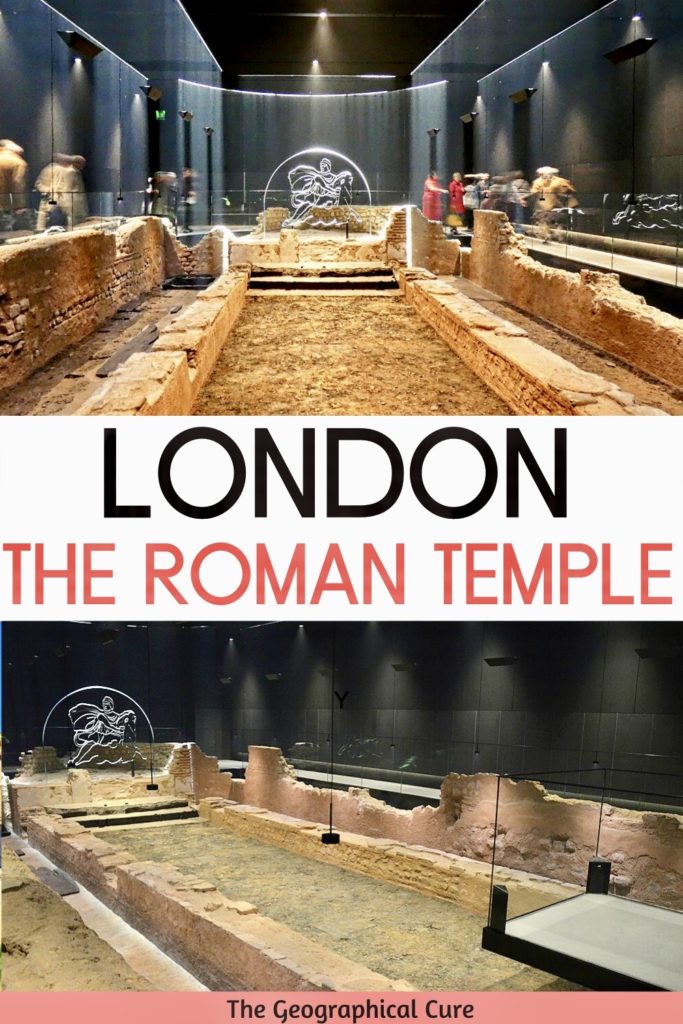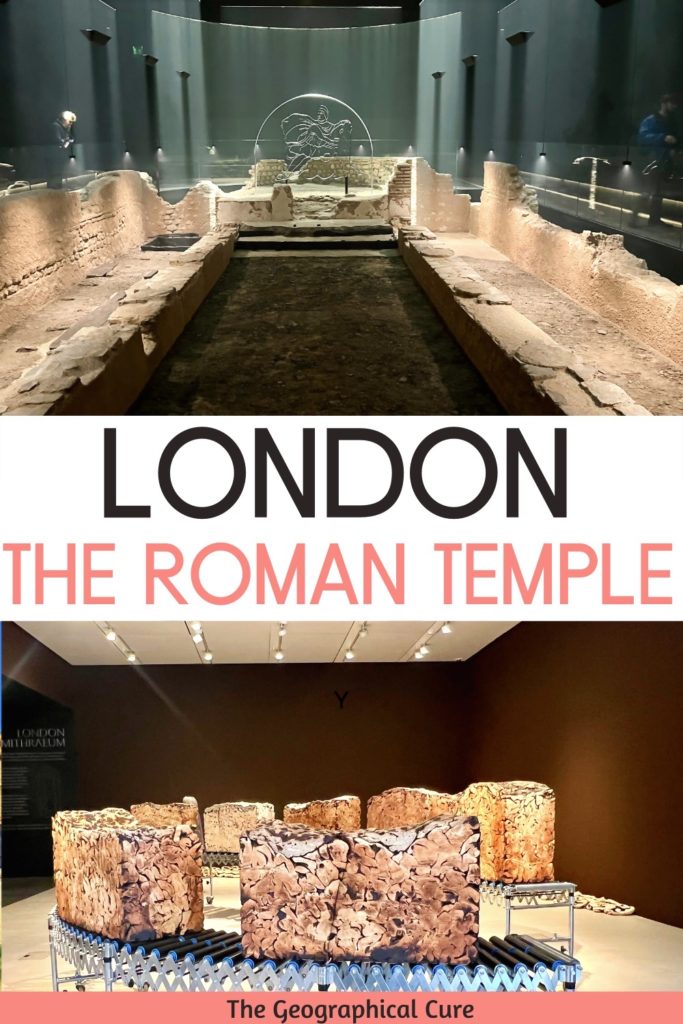Did you know there’s a Roman temple in London? And that it’s a rare Mithraic temple to boot?
I know I didn’t, until my most recent visit when I was seeking out hidden gems in London. What a brilliant find. The London Mithraeum is completely free to visit and a relatively new attraction in London.
The temple is an archaeological attraction in the center of London. It’s one of Britain’s most important archaeological sites, one of only a 100 Mithraic temples found throughout the ancient Roman world.
You can travel back 1,800 years in time on a visit, with exhibits that lay out the temple’s story.
Visiting the London Mithraeum is no ordinary experience. The twice reconstructed and relocated ruin is a powerful re-imagining of the ancient temple, which attempts to connect visitors to London’s Roman past.
In this guide, I give you an overview of the history of the London Mithraeum. I tell you what to expect on a visit and what to see inside.
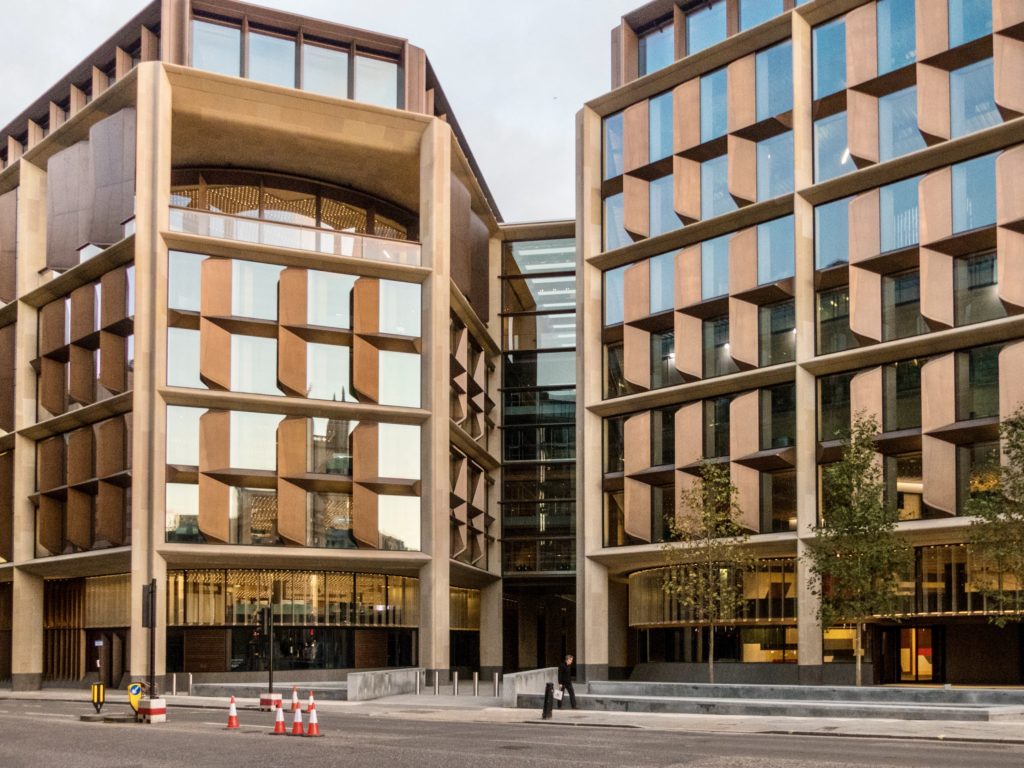
Cult of Mithras
Very little is known about the all male Roman Cult of Mithras or its rituals. Even in antiquity, the cult was shrouded in secrecy.
Historians think the mystery cult first appeared in the 1st century and spread throughout Europe. This was around the same time Christianity surfaced.
Members of the cult came from the Roman military and political elite. They were required to embody the strength and stamina of the god Mithras.
The temple may have been a place for feasting, drinking, and ritualistic male bonding. But that’s just speculation.
What historians do know about the cult is that its central icon and hero figure is an image of Mithras. The god is typically depicted in a Perisan-style cap.
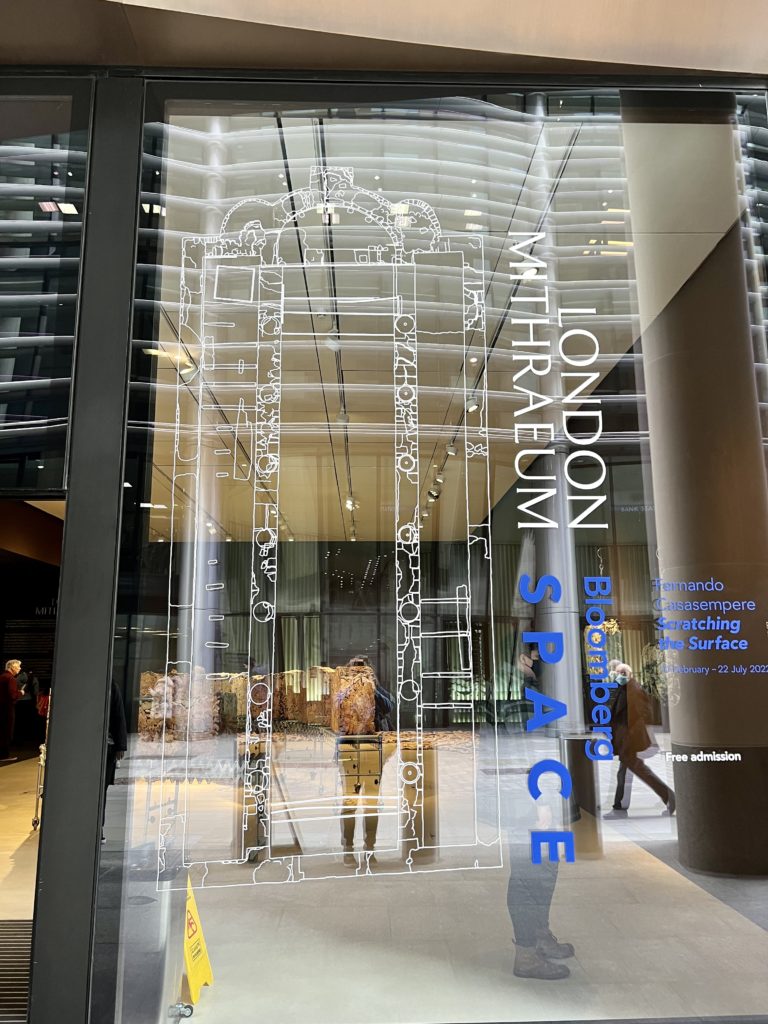
He’s shown wrestling and slaying a bull in a cave, surrounded by other figures, animals, and references to the cosmos.
What is the meaning of the scene? Mithras and the primordial bull reputedly symbolize the battle between good and evil.
Some historians interpret the image as a creation myth, wherein the bull’s blood revitalizes the earth and mankind.
Another theory is that the bull represents evil that cannot be completely destroyed. Mithras’ stabbing is an attempt to weaken the bull’s evil power and create more opportunity for good.
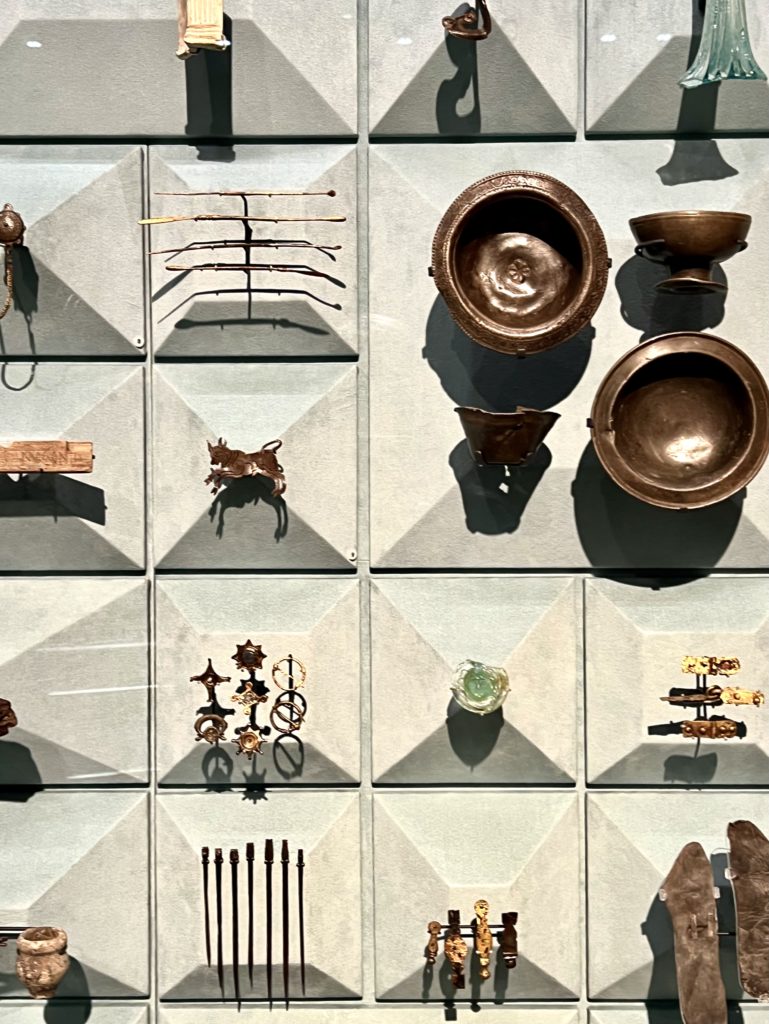
Mithraism seems to also be associated with astrology. Idols and symbols of the zodiac signs have been discovered in Mithraic temple ruins.
The Mithraic ceremonies were probably held in a dark cave-like setting. Light was likely provided by candles or torches.
In the 4th century, Mithraists faced persecution from Christians. Mithraism was subsequently suppressed and eliminated in the Roman empire by the end of the century.
READ: Nutshell History of Ancient Rome
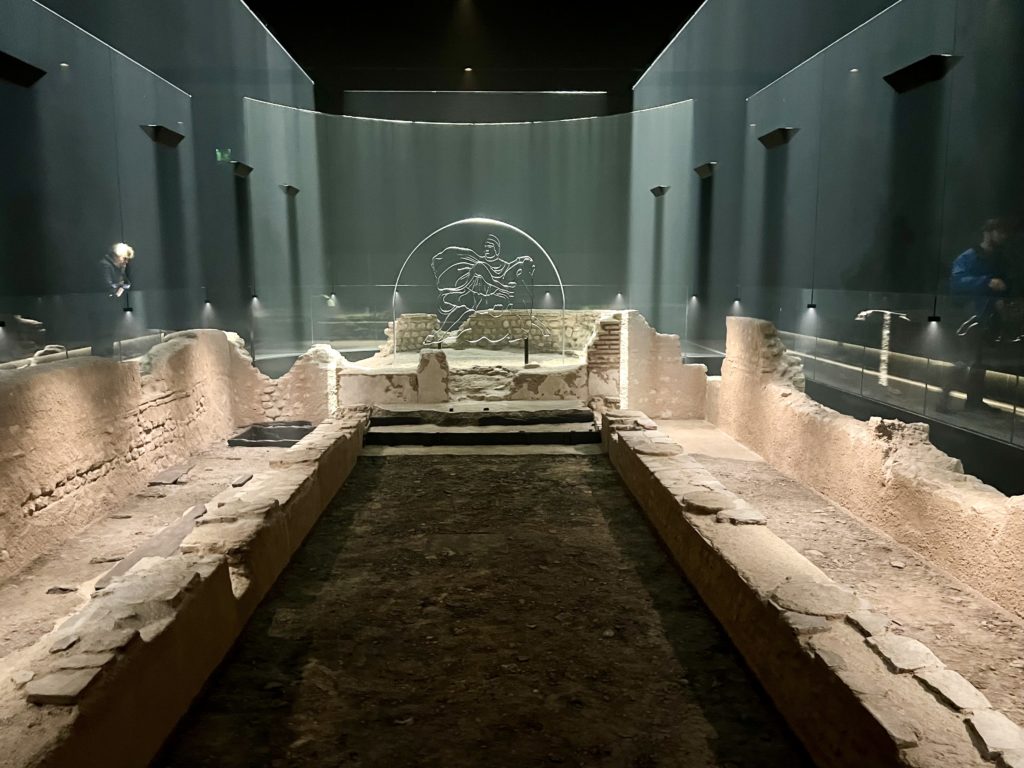
History Of The London Mithraeum
One doesn’t typically think of London as a place to discover Roman ruins. But, in fact, the Roman Empire swept through Britain in 40 A.D.
They established a city known as Londinium, which is now central London. It became one of ancient Rome’s most important outposts.
The London Mithraeum was originally built around 240 A.D. An inscription on a temple relief may indicate that the original founder was a fellow named Ulpius Silvanus. He was a veteran of the second legion of Rome’s first emperor Augustus.
READ: History of the Roman Emperors
By the 5th century, the temple, like the city of Londinium, was abandoned. Over time, the ruins were buried under layers of soil and new buildings.
The temple lay underground untouched for almost 2,000 years.
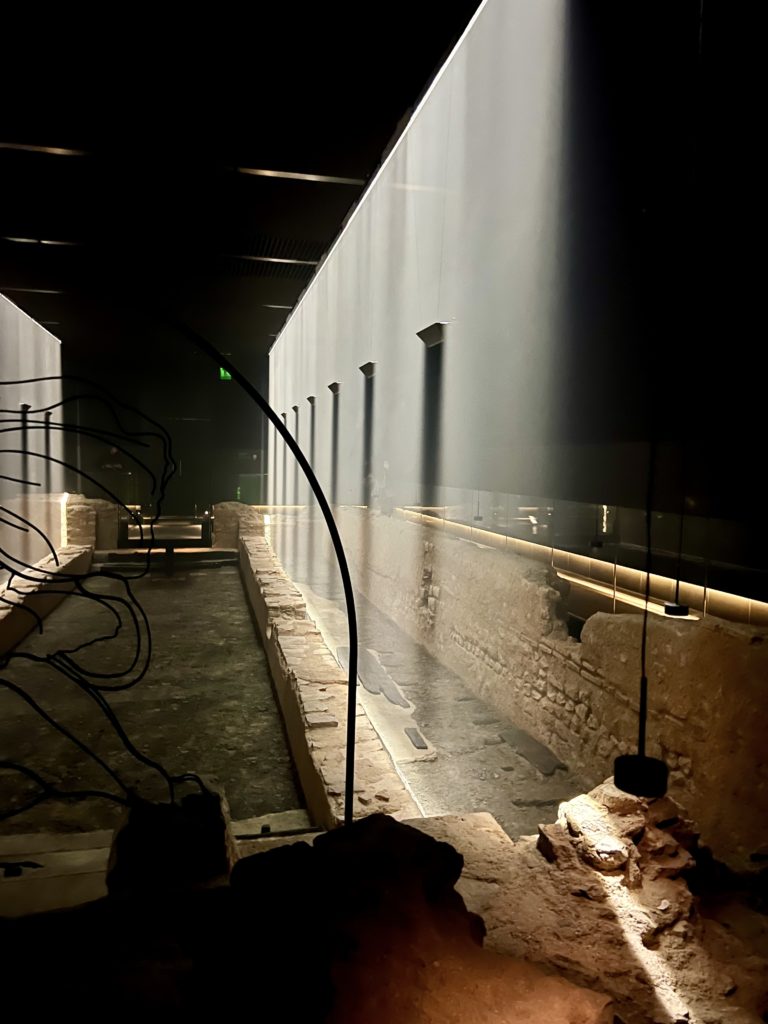
The London Mithraeum was first discovered by chance in 1952-54. It happened during excavations and new building activity after WWII bombing. The site was excavated by eminent archaeologist W.F. Grimes.
Londoners were obsessed with the uncovered ruins. There was a frenzy of interest, as thousands of people visited them.
At first, archeologists didn’t know the purpose of the temple. But then they discovered a bust of Mithras, confirming that it was a Mithraeum.
In response to the public interest, the temple was — horrors! — ignominiously reconstructed on the roof of a nearby car park. It was called the Walbrook Mithraeum.
The excavators found white marble likenesses of Minerva, Mercury, Mithras, and Serapis. They also found a marble relief of Mithras killing the bull. These artifacts are part of a display on Mithraism in the Museum of London.
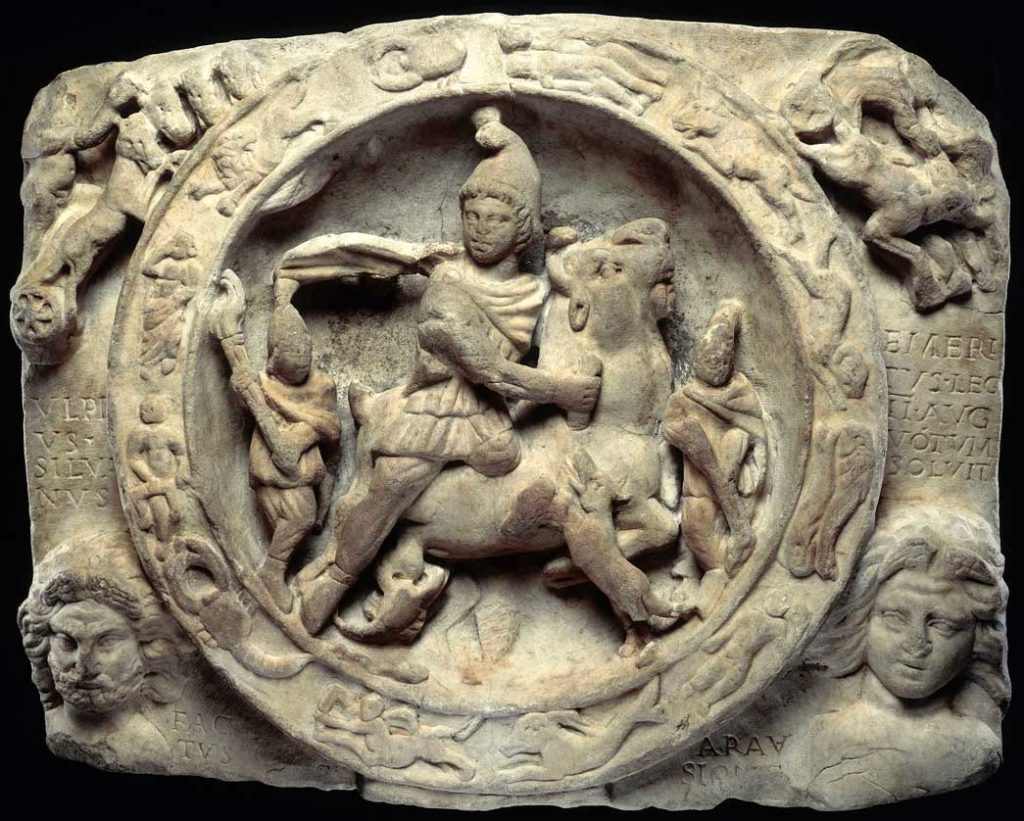
The general consensus is that the reconstruction was botched. The temple was stitched together in the wrong location, with wrong orientation, the wrong floor paving, and at the wrong level.
Any mysticism associated with the cult and its subterranean places of worship was lost.
Nonetheless, six decades later in 2007, Historic England gave it protected status and added it to the national list of historic buildings.
In 2010, the businessman and philanthropist Michael Bloomberg’s company acquired the site. As part of the Bloomberg Project, it was re-excavated in 2010-14.
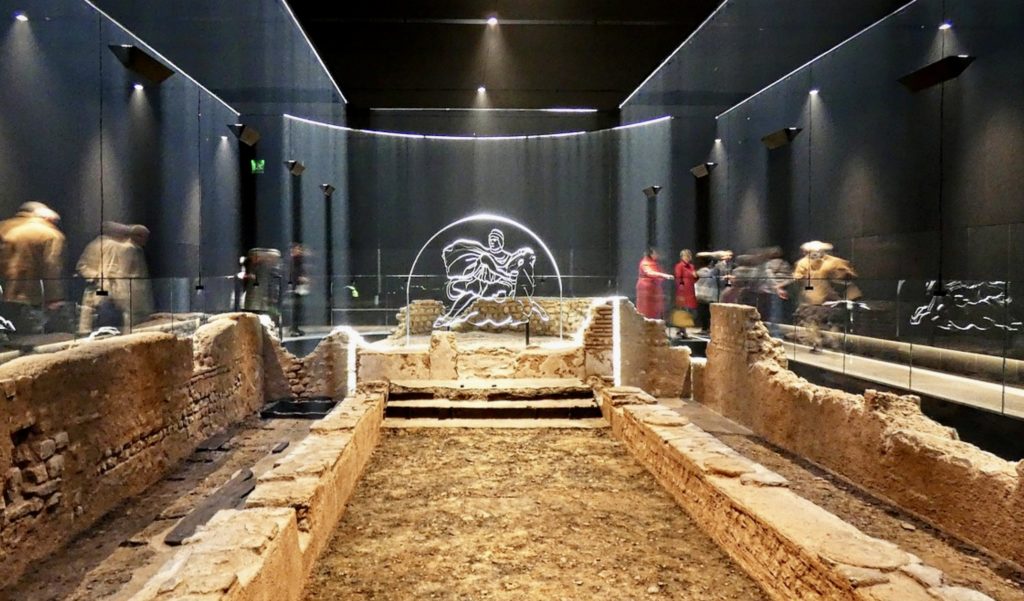
The excavation was tricky. The team had to use diamond-tipped chainsaws to saw through the faux mortar joints that had been added in the first reconstruction.
The temple was moved back underground where it was initially discovered. The ruins are in Bloomberg’s swanky new Norman Foster-designed European headquarters.
The curators aim to bring the temple ruins to life, and to evoke the rituals that transpired within the cave-like walls.
The London Mithraeum opened to the public in late 2017. To venture inside, you go about 26 feet underground below street level.
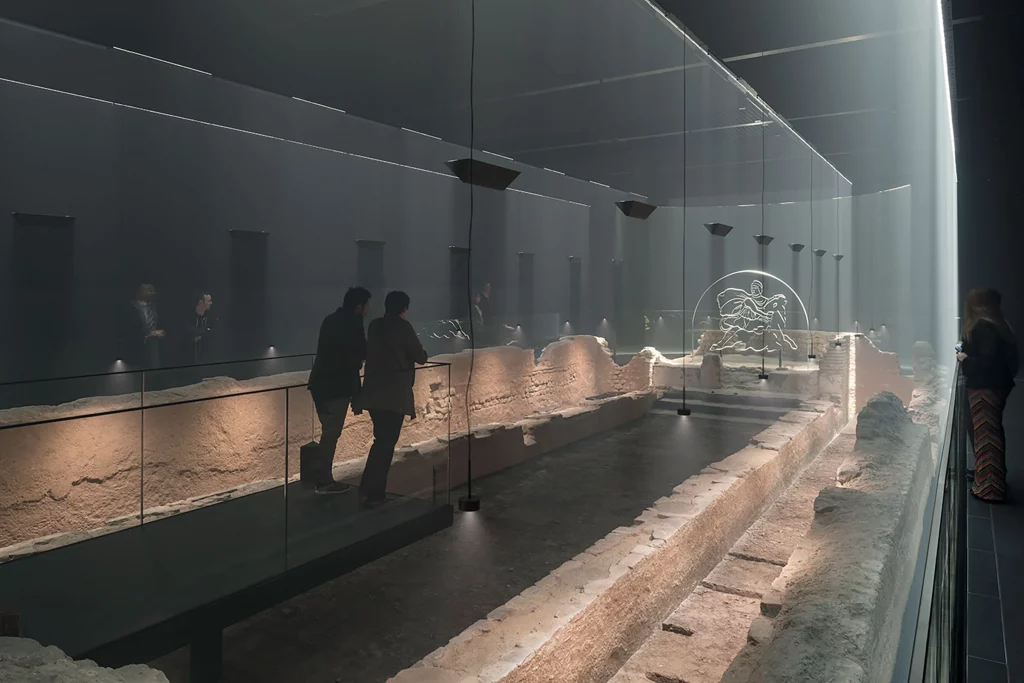
Tickets & Tours
Entry to the London Mithraeum is free. You just have to go through security.
You can only visit on a guided tour. But they leave frequently, every 20 minutes. You can also visit the Mithraeum on a 3 hour guided tour of Roman London.
If you are on a private walking tour of central London or east London, you can ask for the London Mithraeum to be added to your itinerary.
If you want to see more of Roman Britain, you might consider booking a guided day trip tour to Bath and Stonehenge. Bath is home to Britain’s marquis Roman site, the Roman Baths.
What To See At London Mithraeum
On a visit, you enter Bloomberg’s 21st century office building. It seems like an unlikely place to house a Mithraic temple. You’ll walk in on the first floor and will eventually go down two levels. There are also elevators.
The exhibit is small, but very well organized. Here are the things you’ll see on a visit to the London Mithraeum.
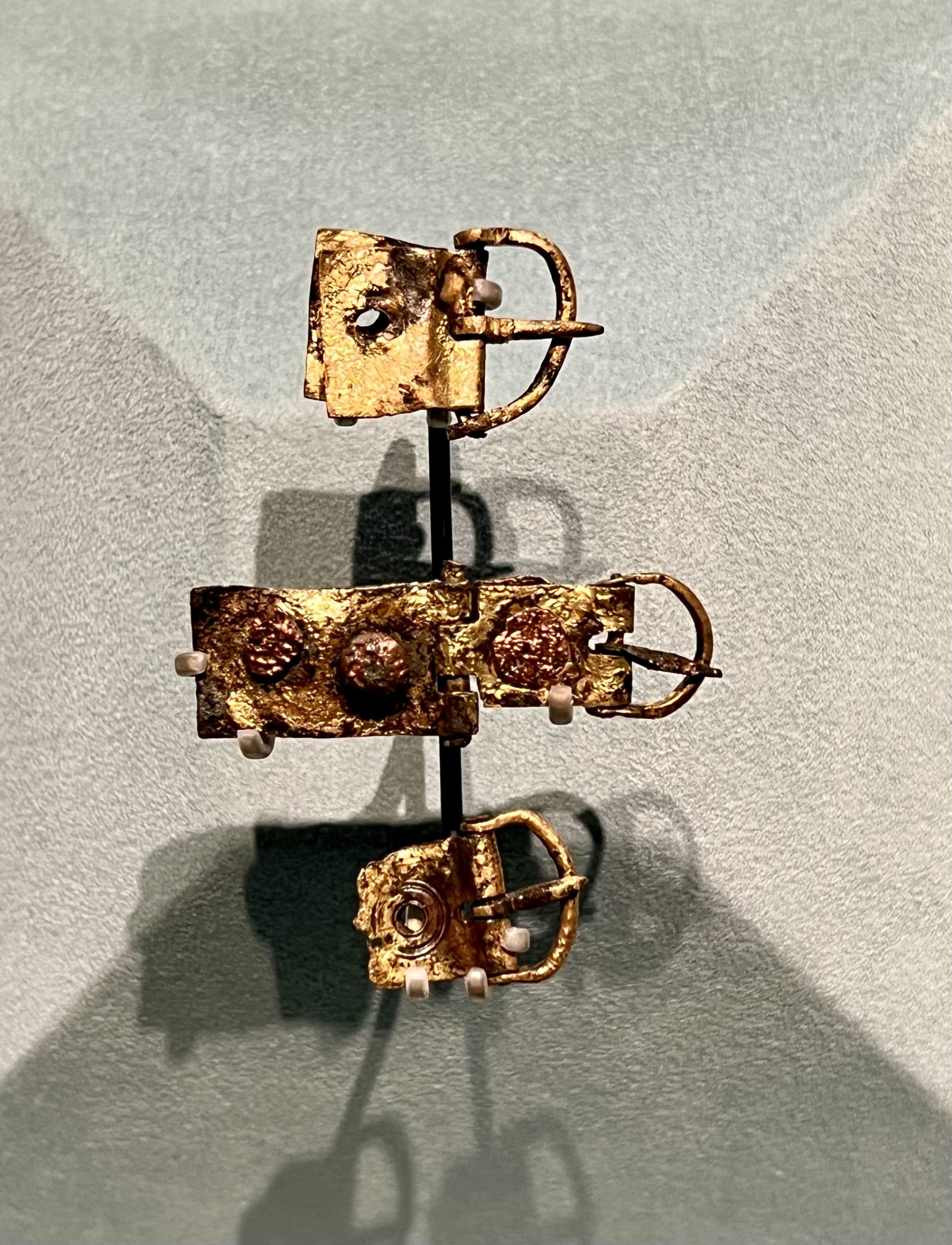
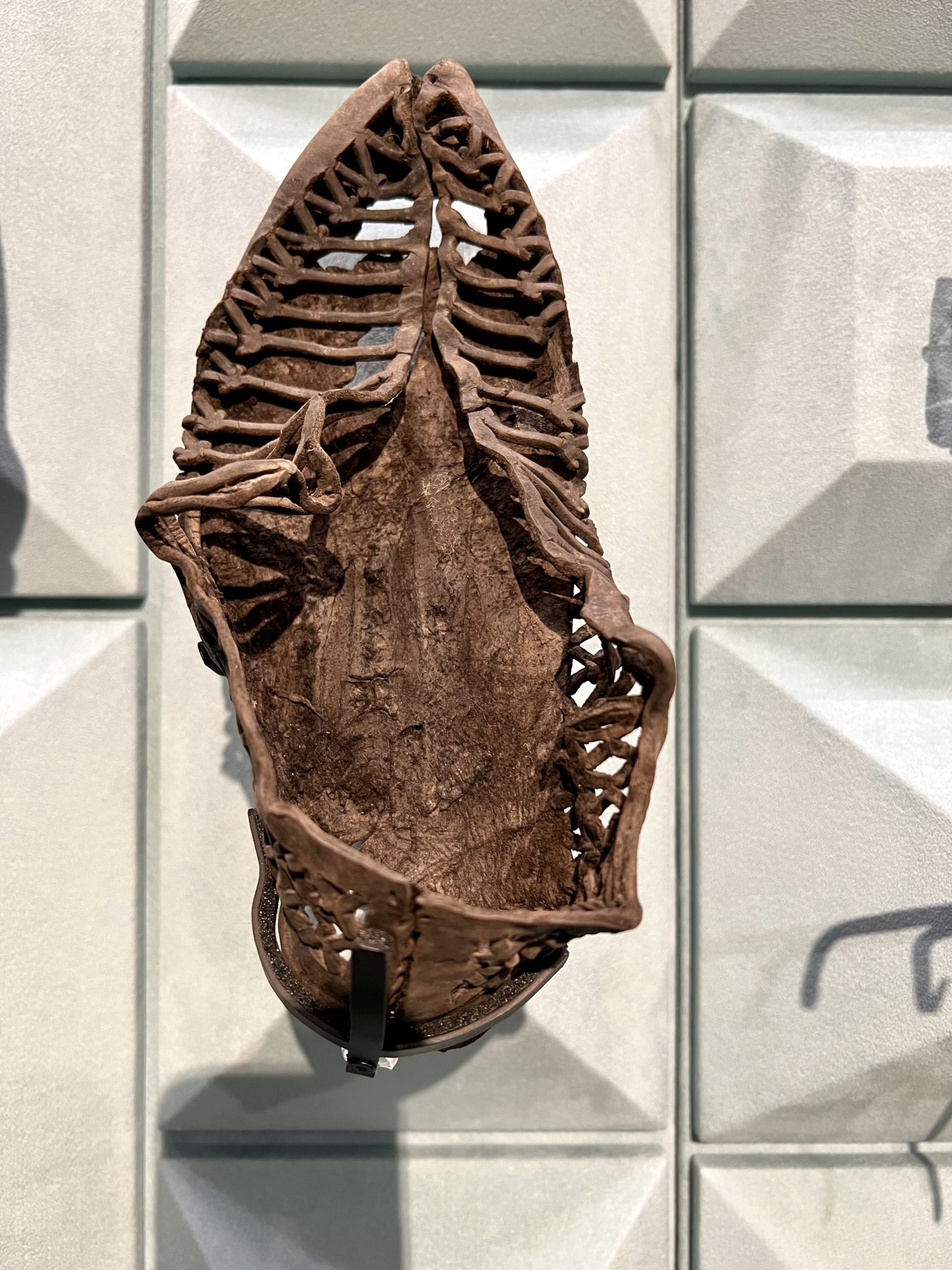
1. Artifact Display
The first floor showcases a remarkable collection of artifacts uncovered during excavation at the site. 600 of the more than 14,000 Roman artifacts uncovered in the Bloomberg excavation are shown in a glass display case.
The artifacts include coins, pots, mosaics, animal bones, good luck charms, amulets, etc. There’s even a Roman shoe.
You can also see the earliest handwritten documents in Britain, including a contract between freedmen. The document collection at the London Mithraeum is the largest in Britain.
After examining the artifacts, you walk down the stairs to a waiting and interpretive room. Along the way, there is history of England inscribed in text on the black granite side wall.
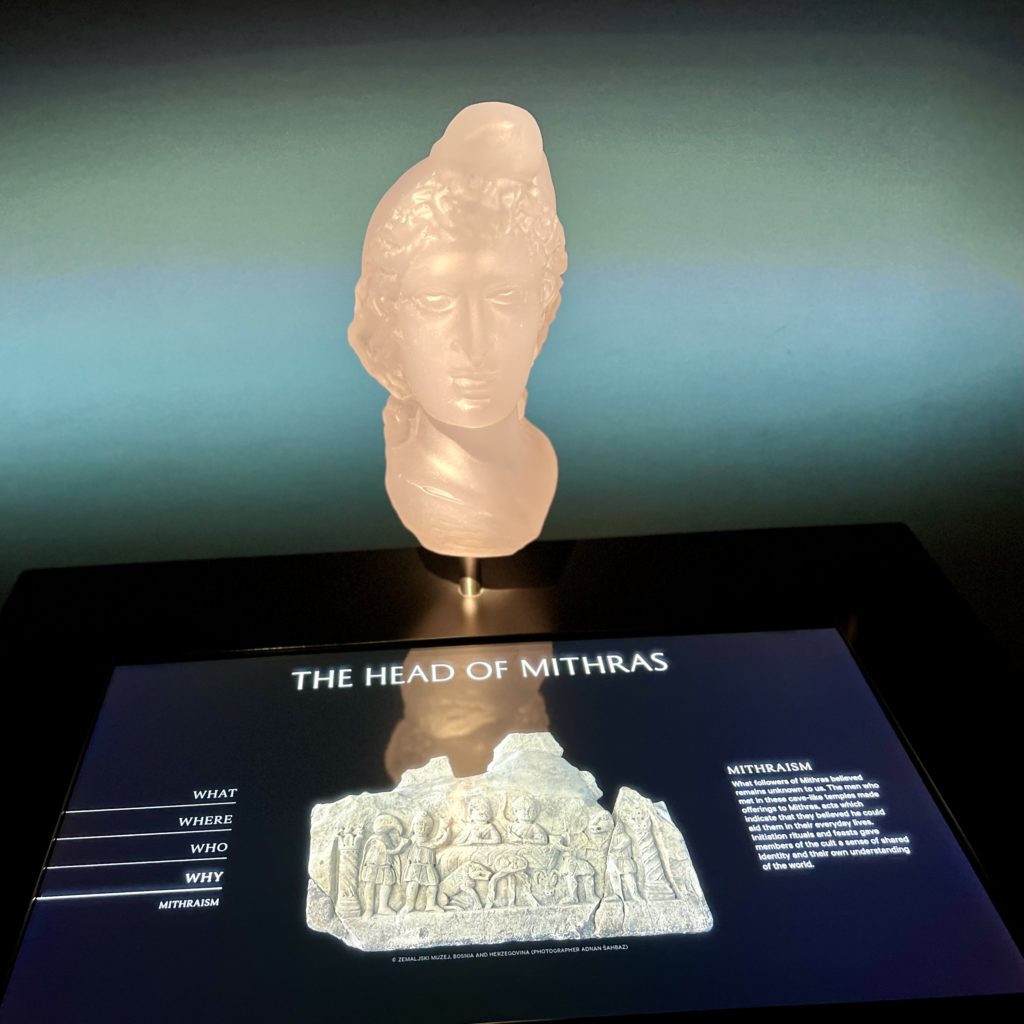
2. Interpretive Room
You then arrive in an interpretive space on the mezzanine level. Here, you can learn about the history and discovery of the temple.
You can also read about the clues that helped archaeologists interpret the cult of Mithras.
There’s an audio introduction to listen to while you wait. There are also interactive tablets and displays.
You’ll see resin casts of Mithraic sculptures.
3. Visiting The Mithraic Temple
When your tour is called, you descend to the subterranean level. The London Mithraeum provides a unique immersive experience for visiting a Roman ruin.
Bloomberg tries to liven up the experience so that you’re not just looking at stones (which you might feel is all you’re doing at Stonehenge).
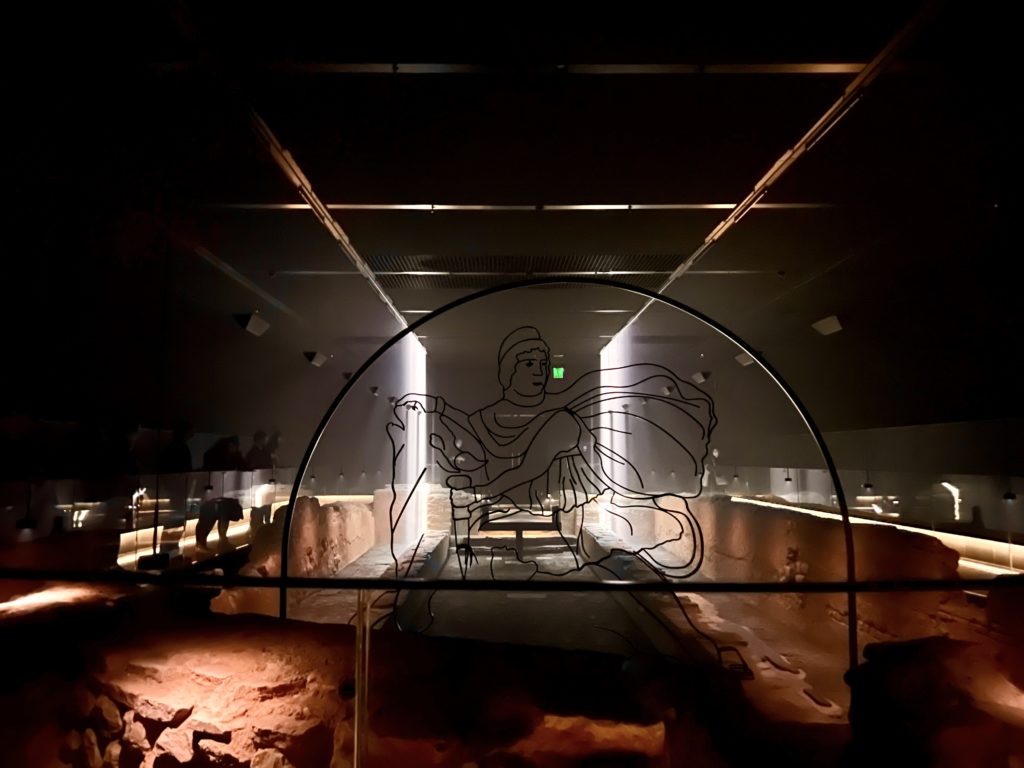
A collaborative team was involved in designing the immersive experience — from archaeologists to historians, to stonemasons, to lighting artists.
The temple is almost 20 yards long and surrounded by glass. It’s divided into two side aisles and a central nave. The floor is mud, an intentional choice since the original timber flooring was long gone.
The temple is thought to have accomodated up to 30 cult members, who sat in wooden benches in the side aisles. Originally, the temple had seven pairs of columns running down the side aisles.
Only the physical ruins of the ground floor walls have been reconstructed. The stone and bricks are all original, put together with modern mortar.
When you enter the temple, you are immediately plunged into darkness. The setting replicates the cave-like settings from Mithraic rituals.
A light and sound show plays for about 10 minutes. Mithraic ceremonies were, in fact, though to incorporate dramatic lighting.
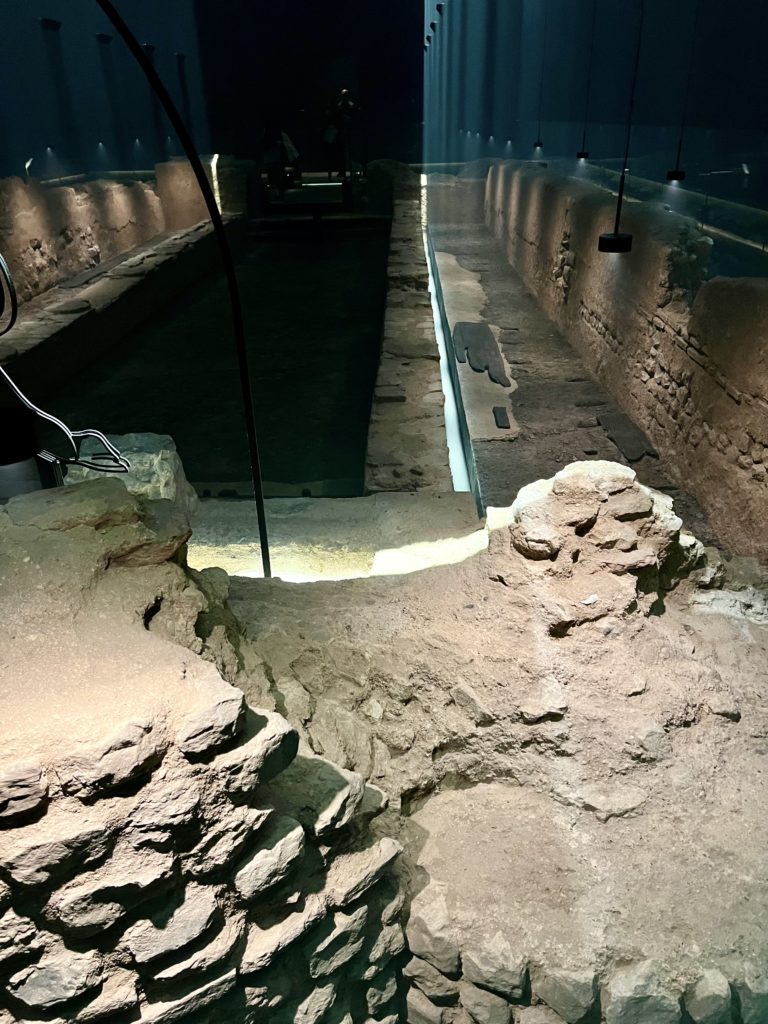
You’ll hear the sound of shuffling sandaled feet. Voices chant in Latin, echoing around the space. The dialog was taken from the names of initiates in the votive inscriptions that survive.
This all helps recreate the atmosphere that would have been familiar to Roman worshipers.
Then, in dramatic fashion, sheets of light drop from the ceiling. You’ll see the ghostly outline of an atmospheric temple.
The lighting creates long lost walls and columns on the sides of the temple, giving you an idea of what it might have looked like.
It’s not an “authentic” experience per se, but it’s meant to evoke Ancient Rome in a realistic way.
From my observations, some people liked it and some people would have preferred to see the temple fully lit. I myself enjoyed it.
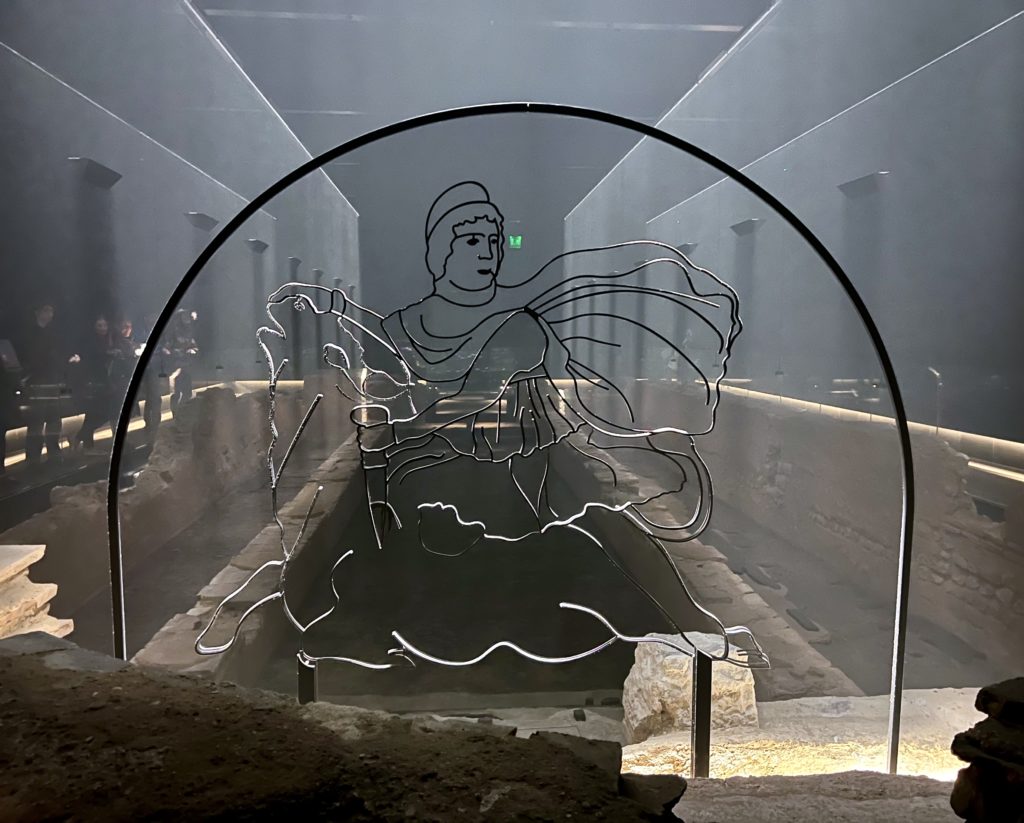
Practical Information and Tips for Visiting The London Mithreaum
Here are some tips for your visit to the London Mithraeum.
Address: Bloomberg Space building, 12 Walbrook, London, EC4N 8AA
Hours: Tuesday – Saturday, 10 am-6 pm; Sundays/ bank holidays 12 pm-5 pm; First Thursdays, 10 am-8 pm
Entry fee: Entry is free, with the ongoing maintenance costs funded fully by Bloomberg. In high season, you should really book a reservation time online because there is a cap on the number of people who can visit at one time.
How long to visit: Approximately 45 minutes to 1 hour
Pro Tip: The main temple is dark and a bit spooky. It may not appeal to young children.
Tube Station: Walbrook
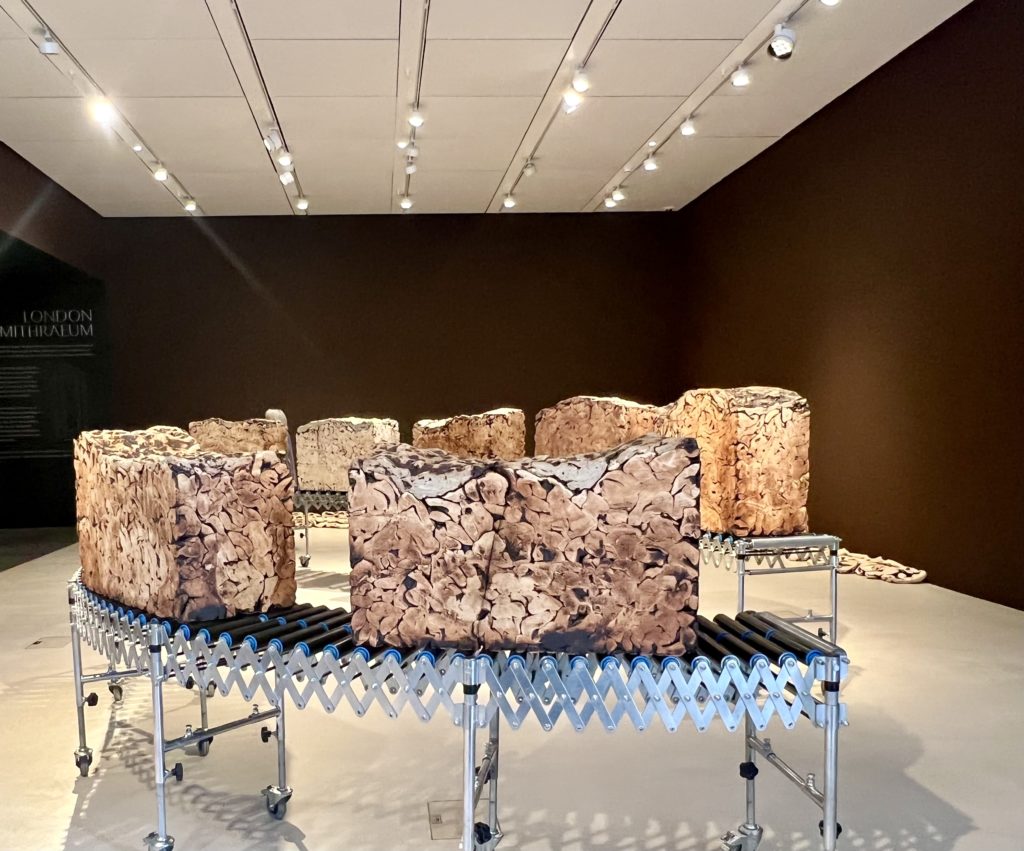
I hope you’ve enjoyed my guide to visiting the London Mithraeum. You may enjoy these other London travel guides:
- 3 Day Itinerary for London
- 5 Day Itinerary for London
- Best Museums in London
- London Tourist Traps To Avoid
- Harry Potter Places In London
- Guide To Westminster Abbey
- Guide To St. Paul’s Cathedral
- Guide to the Tower of London
- Guide to the Churchill War Rooms
- Guide To Hatfield House
- Guide To Hampton Court Palace
If you’d like to visit the London Mithraeum, pin it for later.

